 By L. Dennis Burns, CAPP
By L. Dennis Burns, CAPP
I recently read a Wired.com article entitled, “Uber Writes an Equation to Help Cities Measure–and Manage–the Curb”.
The equation devised by Uber is meant to help cities evaluate how efficiently they’re using this increasingly contested space.
Here is the article’s opening paragraph: “After years of neglect and scorn, this strip of urban infrastructure, long the sole domain of the meter maid, has gotten incredibly crowded. Bike- and scooter-share companies would love to park their wheels there. Transit agencies would love for drivers to stay out of their bus stops. Delivery drivers—the folks transporting businesses’ daily merchandise, the roughly 30 percent more UPS, FedEx, and USPS packages sent since five years ago, the 20 percent more takeout orders—would love to idle just outside their destinations. Ride-hailers like Uber and Lyft would love to pick up and drop off their passengers quickly and safely. Car owners would love to park there, ideally for free.” Sound familiar?
IPMI’s 2018 Emerging Trends in Parking survey agrees. The survey begins with a heading that reads, “It’s All About the Curb.” New lifestyles put transportation and mobility center-stage, shining a spotlight on curb management, alternative commuting methods, and parking.
In a report released last month, Uber and the transportation consultancy Fehr and Peers published what they’re calling a “curb productivity index.” It’s a way to figure out what the curb is doing for you. The equation is deceptively simple:
Activity/(Time x Space)
Activity is the number of passengers using the curb space by a specific mode, time is the duration of their usage, and space is the total amount of curb footage dedicated to that use.
The article provides several examples on how to apply this equation and suggests that it is “an easy-to-use, easy-to-understand way to communicate the benefits of turning over parking in very busy downtown centers to more productive uses.”
The full story can be accessed here.
What do you think of this approach?
Dennis Burns, CAPP, is regional vice president with Kimley-Horn.
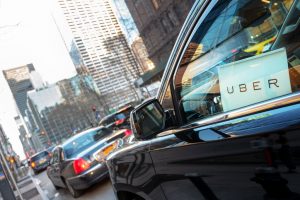 After drivers switched their profile photos for those of other drivers in Uber’s system, London’s transportation authority refused to renew the ride-share operator’s license. Passengers were picked up by the wrong driver more than 14,000 times, the authority said, after photo swaps were made in the company’s main system; passengers saw a name that didn’t match up with the photo or the driver who showed up. The authority said that also meant some drivers were uninsured and even unlicensed.
After drivers switched their profile photos for those of other drivers in Uber’s system, London’s transportation authority refused to renew the ride-share operator’s license. Passengers were picked up by the wrong driver more than 14,000 times, the authority said, after photo swaps were made in the company’s main system; passengers saw a name that didn’t match up with the photo or the driver who showed up. The authority said that also meant some drivers were uninsured and even unlicensed.
 Raise your hand if, as a kid, you envisioned someday flying around like one of the Jetsons in your very own airborne car. You have lots of company. But is that really ever going to happen?
Raise your hand if, as a kid, you envisioned someday flying around like one of the Jetsons in your very own airborne car. You have lots of company. But is that really ever going to happen?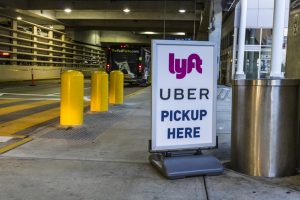 New Jersey Governor Phil Murphy last week signed a law requiring ride-share (TNCs) vehicles to display more identifying information. The law came after the murder of a woman who got into a vehicle she believed to be an Uber.
New Jersey Governor Phil Murphy last week signed a law requiring ride-share (TNCs) vehicles to display more identifying information. The law came after the murder of a woman who got into a vehicle she believed to be an Uber.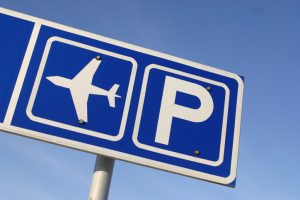 By Tim Maloney
By Tim Maloney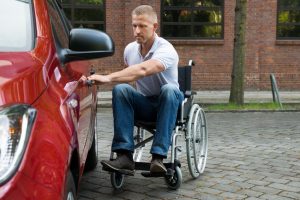 More people than ever are enjoying the convenience of shared-mobility services: transportation network companies (TNCs–Uber, Lyft, etc.), bike-share, scooter-share, and other easy ways to get around. Eric Haggett, senior associate with DESMAN and a member of IPMI’s Planning, Design, & Construction Committee, found himself pondering this recently and wondered if there isn’t more to it all than meets the eye:
More people than ever are enjoying the convenience of shared-mobility services: transportation network companies (TNCs–Uber, Lyft, etc.), bike-share, scooter-share, and other easy ways to get around. Eric Haggett, senior associate with DESMAN and a member of IPMI’s Planning, Design, & Construction Committee, found himself pondering this recently and wondered if there isn’t more to it all than meets the eye: An academic study released last week showed that transportation network companies (TNCs) such as Uber and Lyft are taking a bite out of parking demand, at least in Denver, Colo.
An academic study released last week showed that transportation network companies (TNCs) such as Uber and Lyft are taking a bite out of parking demand, at least in Denver, Colo. By Jeff Petry
By Jeff Petry On-street parking is being traded for curbside drop-off/pick-up zones in five places in Washington, D.C., as part of an expanding program.
On-street parking is being traded for curbside drop-off/pick-up zones in five places in Washington, D.C., as part of an expanding program. By L. Dennis Burns, CAPP
By L. Dennis Burns, CAPP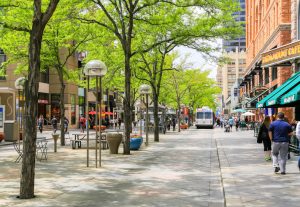 By Michelle W. Jones, CMP
By Michelle W. Jones, CMP